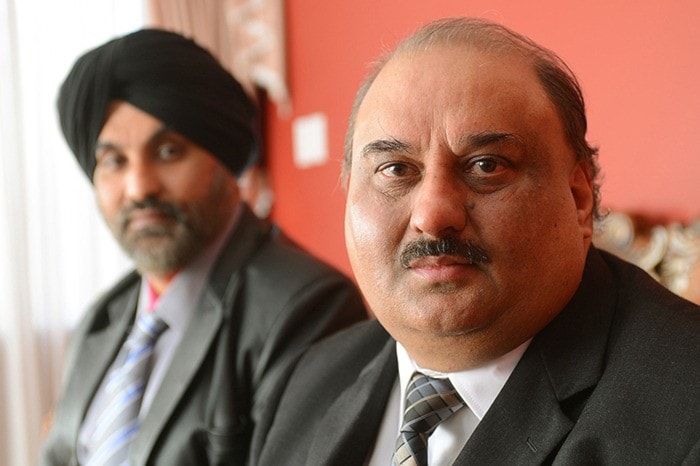In 1965, Puran Singh Janetpura, then in his early 80s, was offered a chance by his family to join them in Canada from his native Punjab.
Although he predicted – accurately – that his family and descendants would live prosperous and educated lives in their new country, he refused to go.
He was still bitter, more than 50 years after an incident that affected his life, as well as relations between Canada and India.
In 1914, Janetpura, 30, was preparing for the trip of a lifetime.
He was already well educated, having studied at an English-language high school in Ludhiana, Punjab, and had studied telecommunications at the University of Amethi.
He was told at the time that any Indian was part of the British Commonwealth and would be welcome to study further in Canada.
In March of that year, with $200 for a Head Tax and a passport in hand, Janetpura – dressed in a suit, tie and turban - boarded the Komagata Maru in Calcutta.
 He was passenger No. 235 on a ship (photo) that would become legend.
He was passenger No. 235 on a ship (photo) that would become legend.
After two months at sea, the 376 passengers were refused entry in Vancouver for two months, from May 23 to July 23, 1914.
Local officials cited the Continuous Passage Regulation, which stated that all immigrants must come directly from their country of origin. Due to the great distance between India and Canada, this was impossible, as ships required a stopover. The Komagata Maru had stopped in Hong Kong.
It was in fact pressure from the white community that kept the passengers on the ship, deprived of food, water and medicine.
Only the assistance from the 3,000-strong Sikh community in the Lower Mainland kept the 376 people alive.
"They were not illegal immigrants," says Janetpura's grandson, Jaswinder Toor, a 52-year-old Surrey man.
Under threat of Canadian naval gunfire, the ship was sent back to India, with only 20 passengers remaining in Vancouver.
The voyage home meant the exiled passengers had been confined to the ship for six months. As they became increasingly agitated, they were hit by British gunfire when they returned to India. Twenty were killed, and scores were wounded.
Janetpura and others were imprisoned for years, and he was later restricted to his home village.
Toor says the Komagata Maru incident had a direct effect on Indian politics, and was a catalyst for an independent India – specifically as passengers spread the word that the British misrepresented what citizenship meant in its Commonwealth.
He died in 1974, having told his family that while it was possible to have all of one's possessions taken away, an education was eternal.
It was a prescient statement, as all of Janetpura's great-grandchildren in Canada have attended UBC for studies in the field of medicine.
Two of his grandchildren, Jaswinder Toor and his brother Raj, 49, who immigrated to Canada in 1976 and 1983 respectively, are observing the opening of an exhibit marking the 100th anniversary of the Komagata Maru's arrival on B.C.'s shores at the Surrey Museum.
Echoes of the Komagata Maru: 1914-2014 features interviews with direct descendants of the steamship's passengers, first-hand accounts of the boat's arrival in Burrard Inlet, and images, video and sound clips from Surrey youth on the importance of the Komagata Maru incident today and issues that persist.
It also includes the voices of second- and third-generation South Asian youth from Surrey who have reflected on the legacy of the Komagata Maru.
Naveen Girn, the Surrey Museum's guest curator for the exhibit, says the Komagata Maru episode is a story not just for South Asians.
He explains that while it's understandably an important part of the history of South Asians in Canada – preceding by decades, for example, their right to vote in 1947 – it's a story "owned by all Canadians."
Echoes of the Komagata Maru: 1914-2014 is on display until July 12. The museum is located at 17710 56A Ave. For information, call 604-592-6956.
